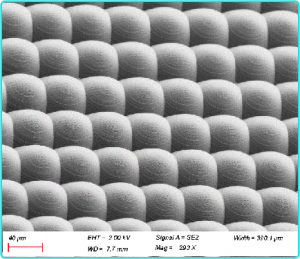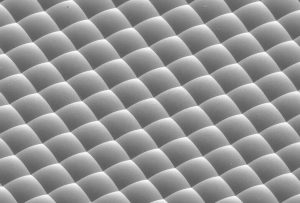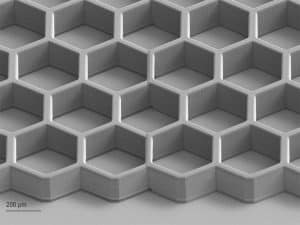
Micro and Nano Processing | MEMS Fine Processing (III)
The microfabrication technology for MEMS is formed on the basis of integrated circuits, and has been successively developed by ultra-precision machining, deep reaction ion etching, LIGA and quasi-LIGA technology, and molecular assembly technology. The processing means include electron beam, ion beam, photon beam (ultraviolet, X-ray and laser beam), atomic beam, molecular beam, plasma, ultrasound, microwave, chemical and electrochemical, etc.
1.1 Ultra-precision machining technology
Ultra-precision machining technology is the use of tools to change the shape of the material or destroy the surface layer of the material and remove it in the form of chips to achieve the required shape. Such as single crystal diamond tool turning and milling, micro drilling technology of micro twist drill and fine micro grinding technology. Ultra-precision machining is characterized by the ability to process complex three-dimensional shapes, and has successfully produced tiny three-dimensional components with sizes ranging from 10 to 100 μm. The minimum shaft end diameter is 10μm.
1.2 Silicon microfabrication technology
Silicon is the most basic micromachining material, and microfabrication technology generally involves silicon materials. As an extension of silicon integrated circuit manufacturing technology, silicon microfabrication technology mainly refers to the production of various micromachined parts based on silicon materials.
(1 ) Integrated circuit lithography
The process of integrated circuit lithography is as follows: firstly, the substrate (mostly silicon wafer) is oxidized to form a protective film of SiO2; then the protective film is coated with photopolymer; the mask is exposed under a prescribed light source; development; the window part of the protective film is etched with etching agent; finally, the photopolymer is removed to obtain the same micro-fine graphics as those on the mask.
The factors that affect the minimum feature size of the graphics (resolution) are: the exposure characteristics of the photographic film, the thickness and uniformity of the film layer, the exposure characteristics of the light source beam on the photographic film layer (diffraction, scattering), the development and etching process, exposure methods. The exposure methods include contact, proximity and projection. Contact exposure can be obtained less than μm accuracy, but not for mass production, because the mask in the exposure process under mechanical load, the contact surface is easy to be scratched by particles; proximity exposure, in the mask and substrate between the gap of 20 to 50 μm, which reduces the wear and tear of the mask, but due to diffraction effects, the accuracy is limited to 2 μm; projection exposure can be obtained about 0.5 μm structural accuracy.
(2) Body micromachining
In vivo micromachining allows the fabrication of silicon microstructures in three dimensions, allowing for micromechanical parts with high aspect ratios to be obtained directly on the wafer. The silicon wafers are first pretreated with optical etching and then the exposed resist material is removed. By selectively using an anisotropic etching solution on the resist, deep grooves can be obtained on the substrate, and the remaining resist can be used as a mask, with the final form determined only by the lattice orientation of the substrate.
With this technology, different structures such as bridges, beams, and films can be made.
Wafers fabricated using bulk micromachining can be connected by bonding or other interconnect technologies to form complex three-dimensional structures.
Because the lattice orientation of silicon is constant, simple circles, cylindrical holes or volumes cannot be formed using this technique. In order to accurately construct the wafer, precise control of when to interrupt the etching process is required.
(3) Surface micromachining
By using surface micromachining technology, cantilever structures or thin films can be made to stand freely from the surface of the substrate. The process is as follows:
(1) formation of the so-called sacrificial layer by photolithography; (2) selective removal of surface material; (3) deposition of polycrystalline silicon structure layer; (4) photolithographic etching; (5) erosion of the sacrificial layer material to obtain the desired microstructure.
To obtain more complex three-dimensional microstructures, sacrificial and structural layers can be added successively, and appropriate lithography and etching techniques can be used, respectively.
Using this method, complex three-dimensional microstructures of 20 μm high consisting of many thin layers can be formed.
(4) Gray tone lithography
In order to obtain improved microstructures using lithography, a technique known as grayscale lithography was developed. This can be achieved by varying the thickness of the chromium layer or by placing very small, precisely arranged holes in the layer so that different areas of the resist receive different light intensities, resulting in different levels of corrosion, and thus special etched structures can be obtained.
(5) Lift-Off technology
After the structural material is deposited by sputtering, the resist layer is removed with the solution, so that the structural material deposited on it is lifted away with the resist, hence the name Lift-Off technology. This technique is particularly suitable for manufacturing hard-to-etch metals and can also be used to manufacture integrated capacitors. Metals are usually deposited using chemical vapor deposition techniques, mainly platinum, titanium or gold.
We offer fastMEMS device / micro and nanostructure processing design services, Feel free to leave a message to inquire.
Related Products
Related Reading
Introduction to microfluidic chips丨Common materials and preparation and processing methods
Introduction to microfluidic chips丨Common materials and preparation and processing methods


